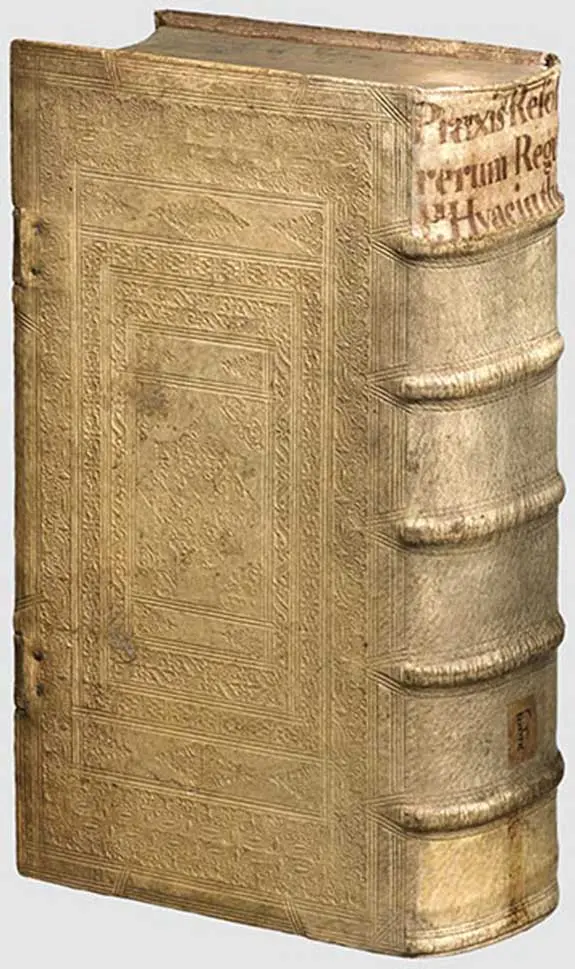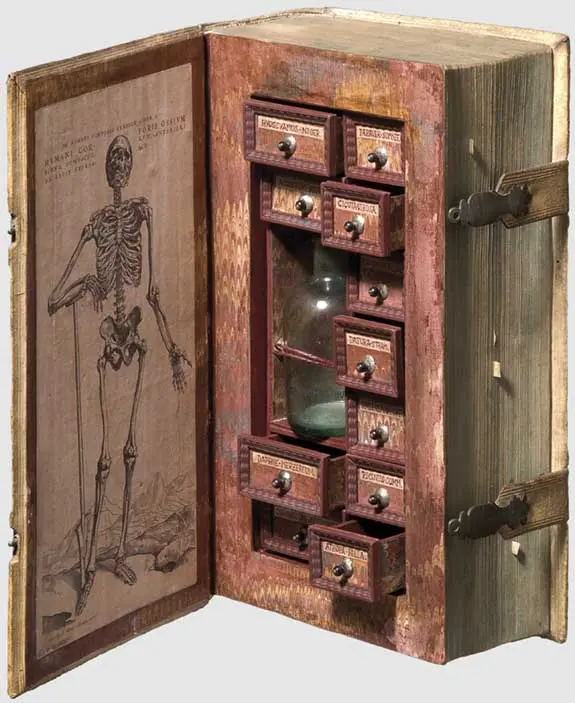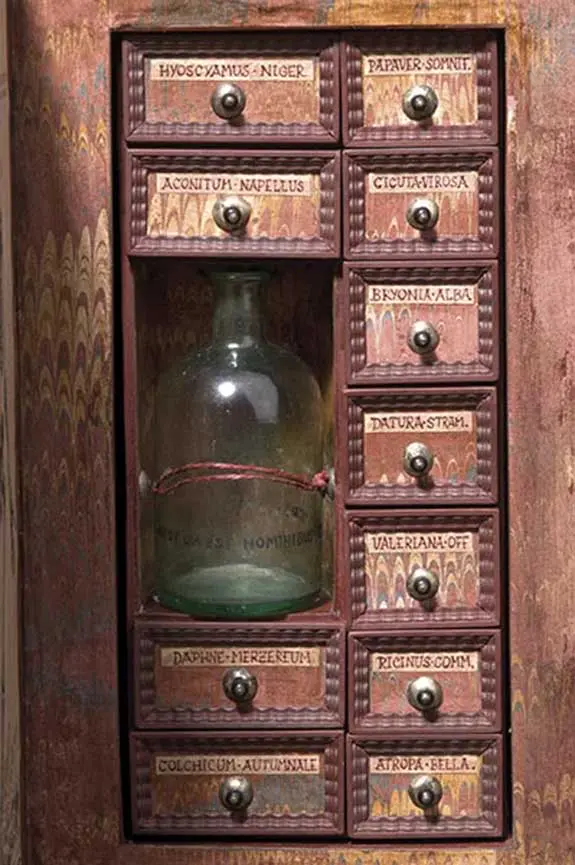There’s a reason why we collect things from the past: they’re unique, unusual and well, almost always awesome. That’s why antique furniture, clothing, art and curio often manage to rake up a hefty price at the auctions. In 2008, Hermann Historica placed a hollowed-out book they dubbed as a 16th-century poison cabinet on their auction block. More accurately, the German auction house described the relic as a “secret poison cabinet in book form”. Did you ever think you’d ever see those words stringed together? Neither did we, but here we are.
This poison cabinet in book form stirred up quite a storm among antique collectors and casual observers upon its introduction. Some questioned the authenticity of the book slash poison cabinet. Was it perhaps… just “an art piece either constructed from period materials or designed to look like it came from the 17th century”? On the other hand, others thought of it as a rather sinister novelty. Either way, a private collector paid €5, 200 (that was worth around $7, 350 then) for it. And despite disappearing into this private collector’s possession, the intrigue of this poison cabinet continued to beguile spectators. A Reddit forum reignited the interest for the Assassin Book in 2017.

This 16th-century book is not what it seems
Despite the discourse surrounding this curio, the only real way we can properly discern whether this is or isn’t a poison cabinet is by scrutinizing its details. The poison cabinet looks just like any hefty, hardbound book from the outside. It even comes with two strapped clasps to keep the book from opening in inopportune moments! But when you open the book, you’ll find a collection of creepy details hidden inside.
When you open the “Assassin’s Book”, an eerie image of a skeleton bearing dated 1682 can be seen glued to the book cover’s reverse side. The poison cabinet is fitted with 11 differently sized cabinet drawers and one open compartment. “The individual drawers covered with colored paper, the front is a flame strip frame,” Hermann Historica detailed. The auction house also went on to say that the attached knobs were made of silver and ebonized wood.

Each of the 11 miniature drawers hidden inside the 16th-century poison cabinet contained dangerous plant extracts
Each drawer bore written labels of its contents, which were mostly herbal plants that could easily become poisonous when given in large dose or mixed together. Others are leaning on the possibility that perhaps this curio for the 16th century is nothing more than a portable medicine cabinet. After all, apothecaries were always traveling and traveling with a bag full of delicate dried herbs and concoctions in breakable bottles would’ve been problematic. But what about the greenish bottle labeled with the designation “Satutum est homnibus semel mori”, which roughly translates to “Man is given to have to die”?
According to their labels, the poison cabinet served as a vessel for Valerian, Castor Oil plant, Bella Donna and even Opium Poppy for its original owner. Several Roman Empresses fell victim to Bella Donna in the past. But it in controlled amounts, it was effective in alleviating motion sickness and even as a muscle relaxant. Opium Poppy has earned itself quite a reputation by becoming a base for numerous narcotics. In spite of this, the essence of Poppy was effective in treating asthma and stomach pains. We probably will never know what that green bottle held. But chances are that it held potent poison or maybe even an antidote!

This only goes to show that everything has two sides to them. Use it in moderation and you’ll be fine, take too much and that might spell the end for you. This 16th-century poison cabinet is definitely a unique and quirky artifact from the past. We wish there were more stories about this curio! If only this book could talk, it would have some very interesting stories to tell!
Source: Hermann Historica

